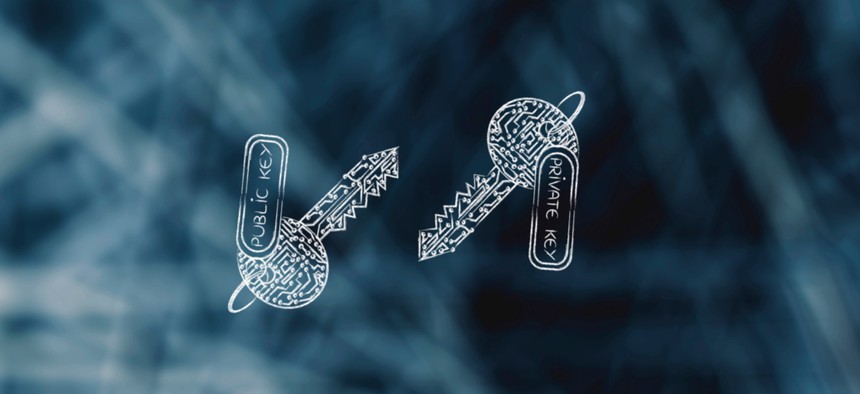Dear DHS, Our Federal Cybersecurity Measures Are Not Enough

faithie/Shutterstock.com
Agencies need to aim for the gold-standard in encryption.
In a somewhat embarrassing cybersecurity incident in July, an “email prankster” in the U.K. fooled several White House officials into thinking he was other officials. In particular, the prankster convinced one official tasked with cybersecurity that he was a senior adviser to President Donald Trump, Jared Kushner and received his personal email address.
Whether this was the cyber incident straw that broke the camel’s back, just a few weeks ago, the Homeland Security Department ordered federal agencies to implement web and email encryption practices to boost cybersecurity protections. Within just 90 days, the decision requires all federal agencies to deploy the designated email security protocol DMARC (Domain-based Message Authentication, Reporting & Conformance) and within 120 days, the HTTPS (Hypertext Transfer Protocol Secure) for all websites.
While the order is certainly well-intentioned and these “encryption” techniques described by Homeland Security are of course necessary, the fact of the matter is that they are also extremely basic in our modern day digital landscape. What the government should be advocating for is the “gold standard” in encryption: end-to-end encryption.
DMARC and HTTPS Still Leave You Vulnerable
Deploying DMARC is designed to help prevent spam and phishing attackers from using email domains to conduct their attacks. And according to a report from security firm GreatHorn, organizations using DMARC receive less than a quarter of the threats received by those that do not use the technology. At the same time, HTTPS is designed to ensure safer web connections for people.
While both of these approaches are a step in the right direction for Homeland Security, they are simply not enough. Federal agencies will still remain vulnerable to cyberattacks. DMARC and HTTPS attempt to provide security between a client and the server, but ultimately the server still has access to all user data. This leaves organizations and companies vulnerable to a central point of attack—meaning when the bad guys attack the server, they still get all user data.
While a step in the right direction, encryption techniques like DMARC and HTTPS are clearly not enough to ensure the security of our federal agencies.
Advocating for the Right Type of Encryption
Many people may hear the word “encryption” and automatically assume that their security will be guaranteed. But, what’s important here is for the government not to advocate for encryption in general for their cybersecurity measures but instead the right type of encryption.
End-to-end encryption is the “gold standard” method of encryption, meaning that—unlike DMARC and HTTPS—the server can never see user data, nor can the server access keys that can decrypt data. Messages and attachments are encrypted directly on the sender’s device and are decrypted on the recipient’s device, which means that only the sender and recipient can read them and the server cannot.
With end-to-end encryption, there are no central points of attack, protecting user data even when the server is breached. Because information is only decrypted on the user’s phone or their computer, an attack on the server won’t compromise an entire organization.
In addition, most systems have the concept of a super-user or administrator who can access all information in the system, which makes an enticing centralized point for targeting by hackers. With the concept of “approval groups,” trust is distributed amongst a set of users so that no one person within an organization can bring the entire business down. What’s more, organizations can decide to comply as a group, which helps them ensure that control is consistent across the board.
Rethinking Federal Cybersecurity Measures
America’s federal government will continue to be a major target for hackers—whether in the private sector or from foreign governments. And while the government has certainly increased its focus and finances dedicated to protecting its systems, it’s not enough. To fully protect against imminent and future threats to the security of our federal agencies, we urge Homeland Security to rethink its implementation of basic encryption techniques in favor of a more secure solution: end-to-end encryption.





